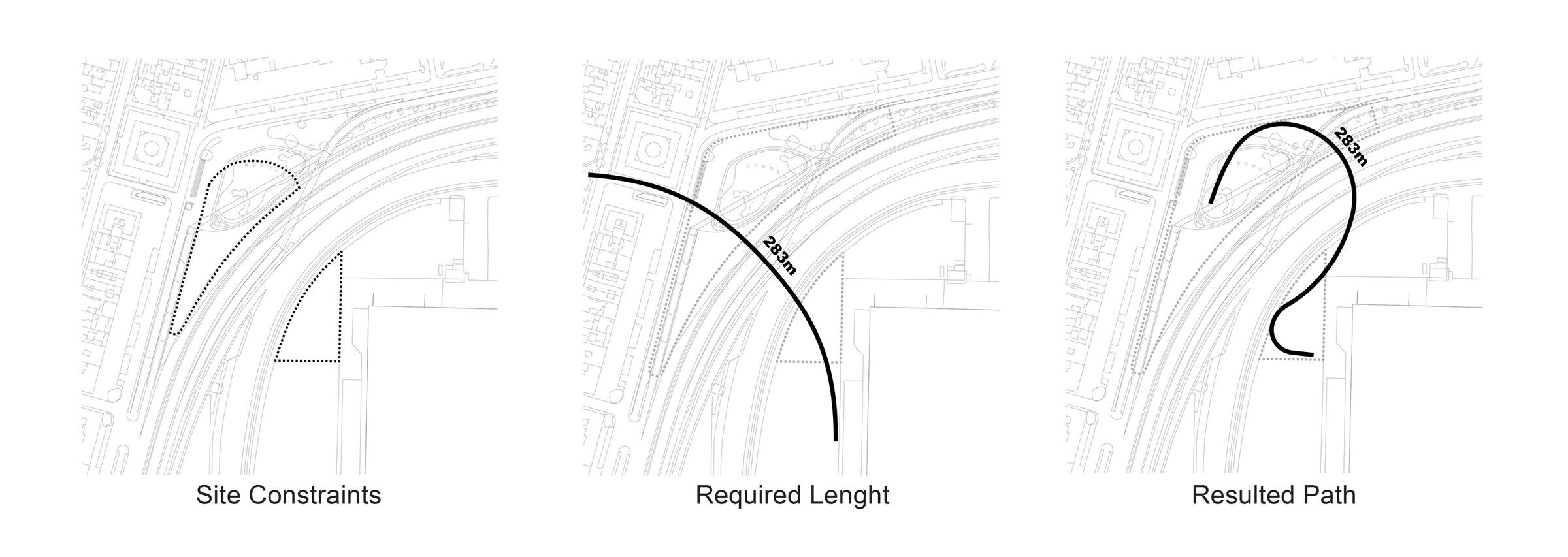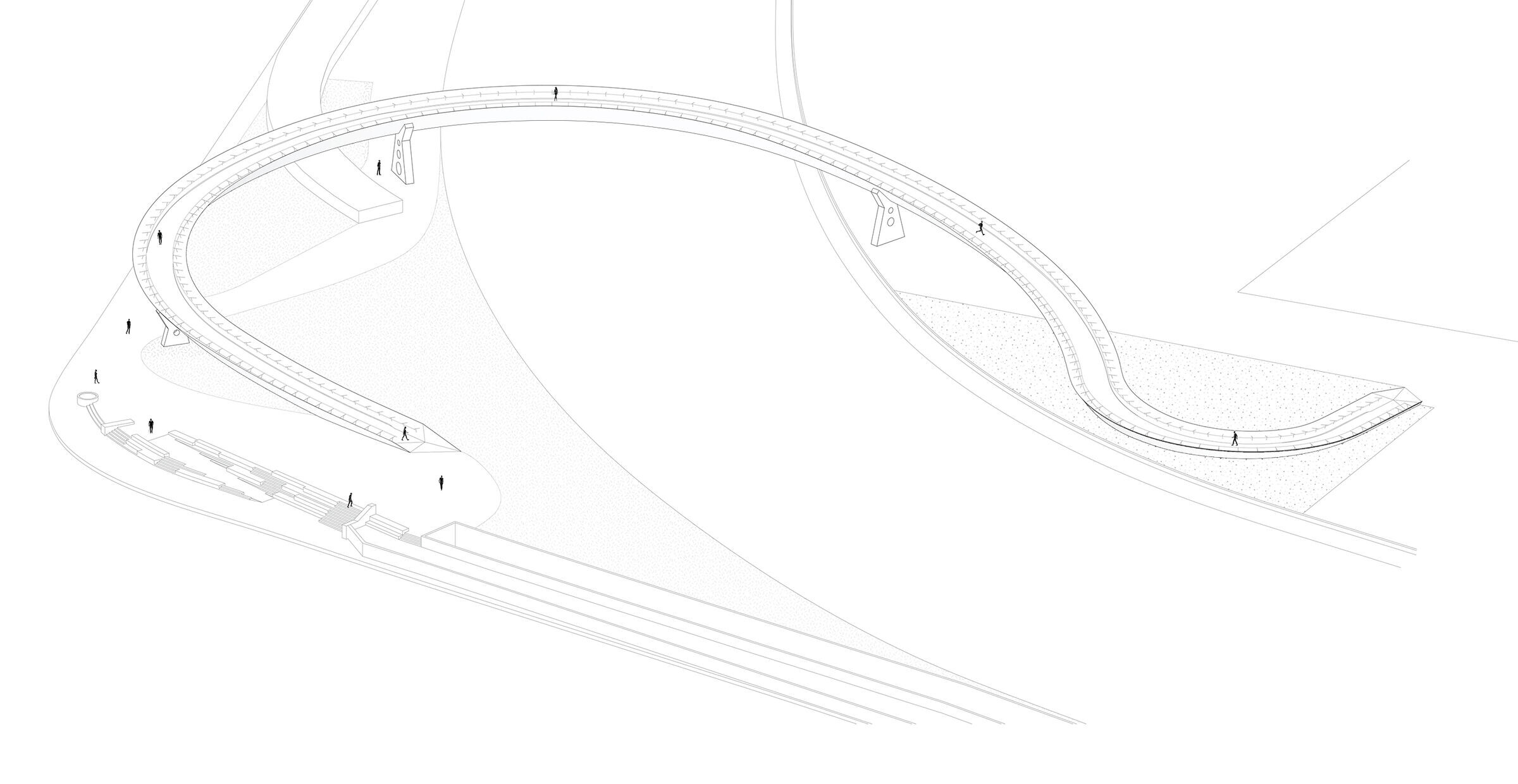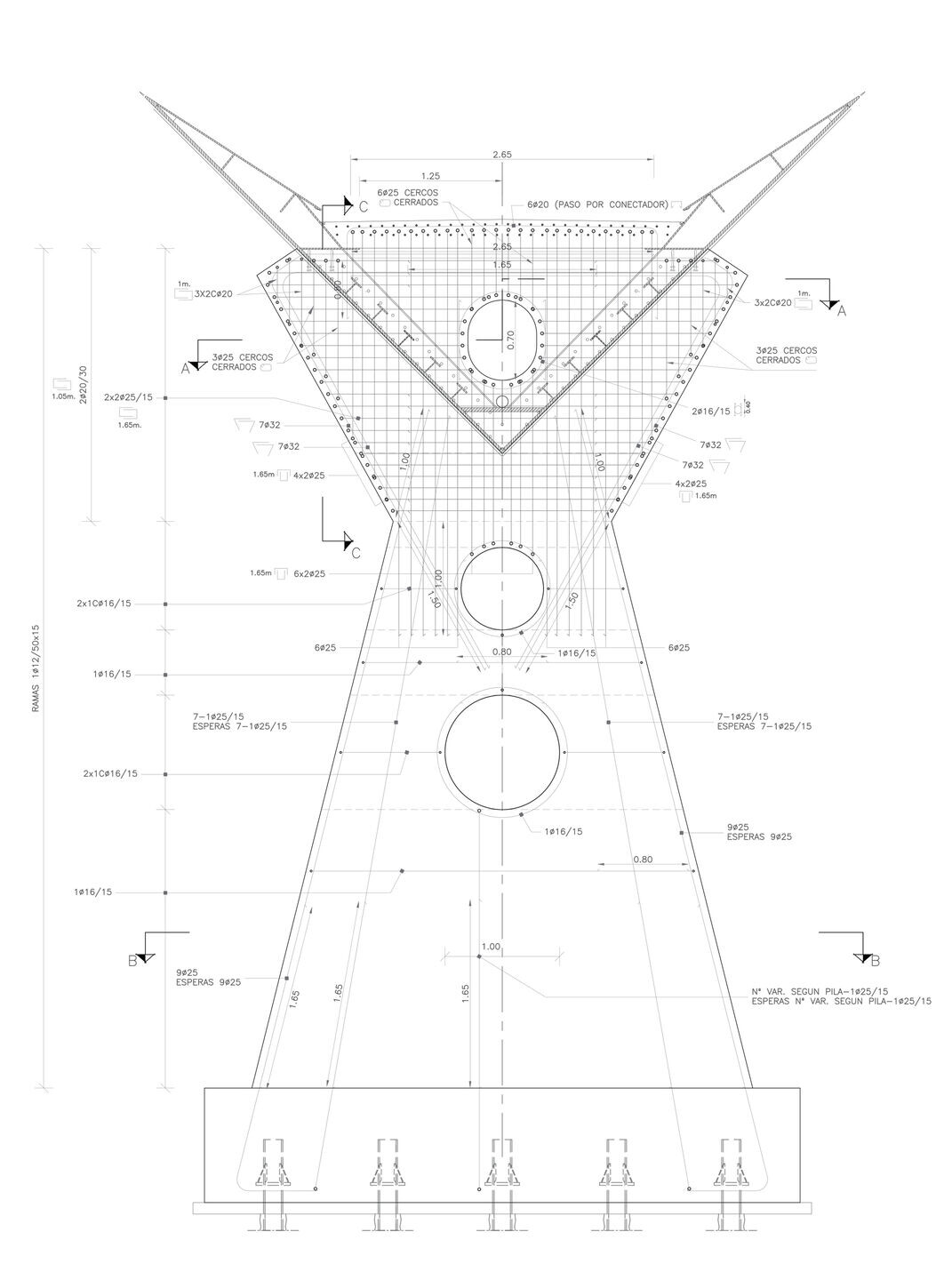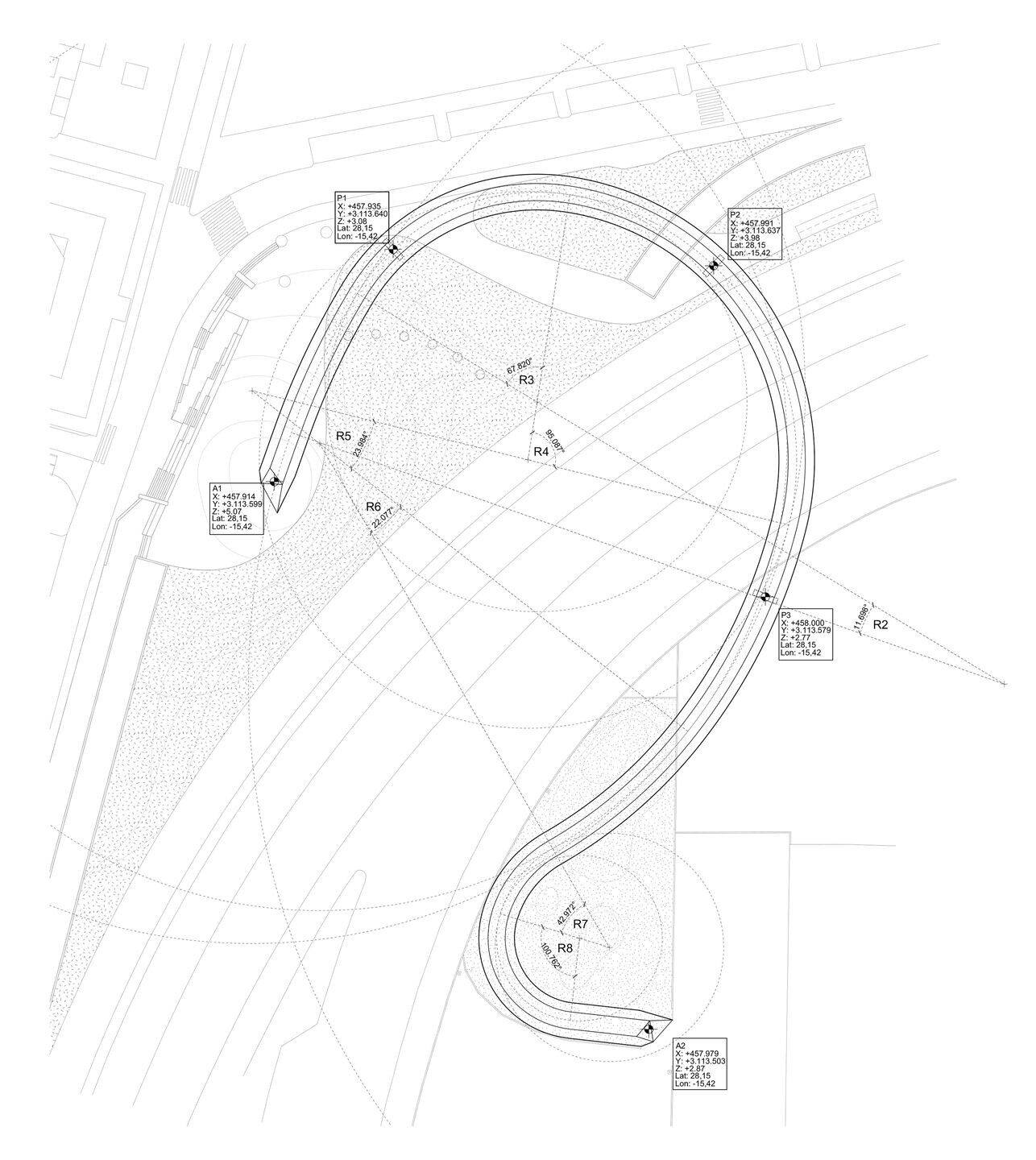With a total length of 283 meters, Onda Atlántica footbridge spans over public spaces without any apparent tectonic effort. It showcases three dramatic 63 meters spans without any intermediate supports denoting an unexpected sense of lightness. Its undulating shape, resulting originally from site constraints, dodge the existing trees while improves the structure performance allowing a design with no expansion joints.
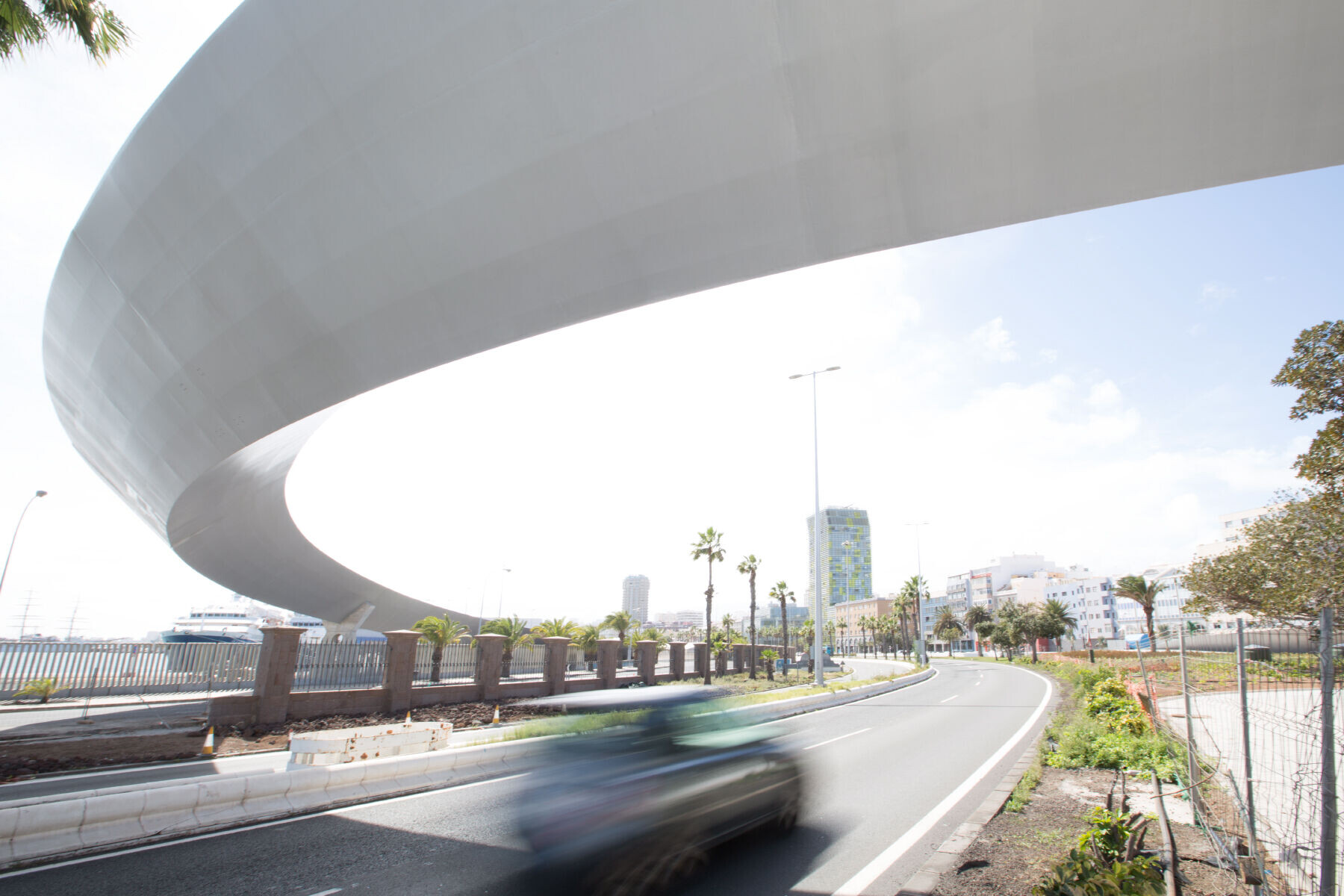
The V-shaped profile is the result of the need to mitigate the acoustic impact from the highway underneath, allowing views onto the city above while providing natural light over the entire path. The shape is perceived two-dimensionally at certain angles, creating the illusion of a curved sheet of paper. The result is a highly innovative structural system, an extremely efficient triangular profile shape not common in the world of bridges engineering, capable of spanning the required curved distances with a great performative agenda and a minimalistic aesthetic.
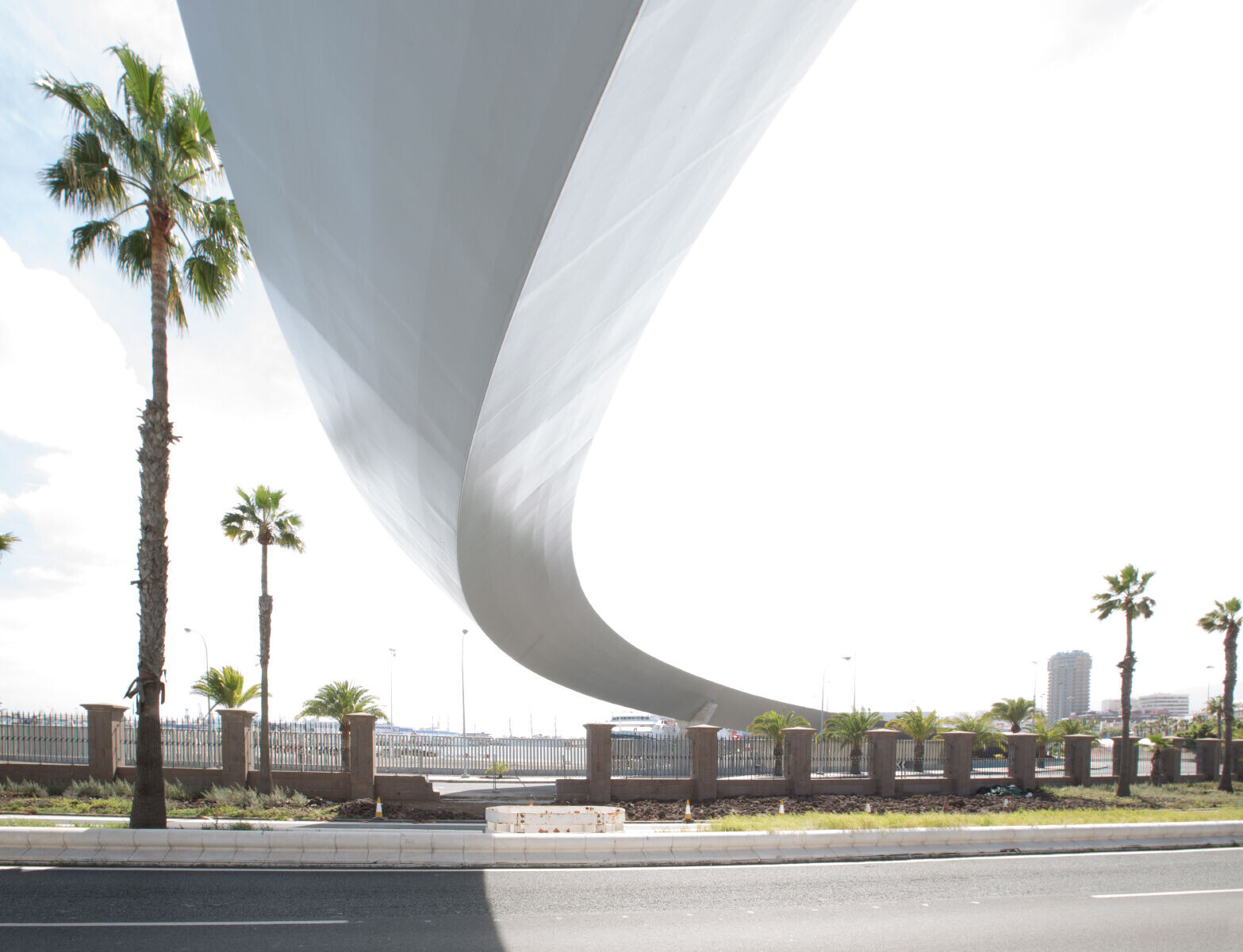
The programmatic requirements for pedestrian, cyclists and accessible crossing are resolved with a unique and simple infrastructure, avoiding any differentiated elements such as stairs and auxiliary elevators. The bridge becomes a large urban sculpture for the city, penetrating both plazas at its landings portraying the illusion of continuation underneath them. Crossing becomes a new experience for its visitors, the bridge is a new exciting in-movement lookout whose profile is perceived as a movie frame displaying a moving city.
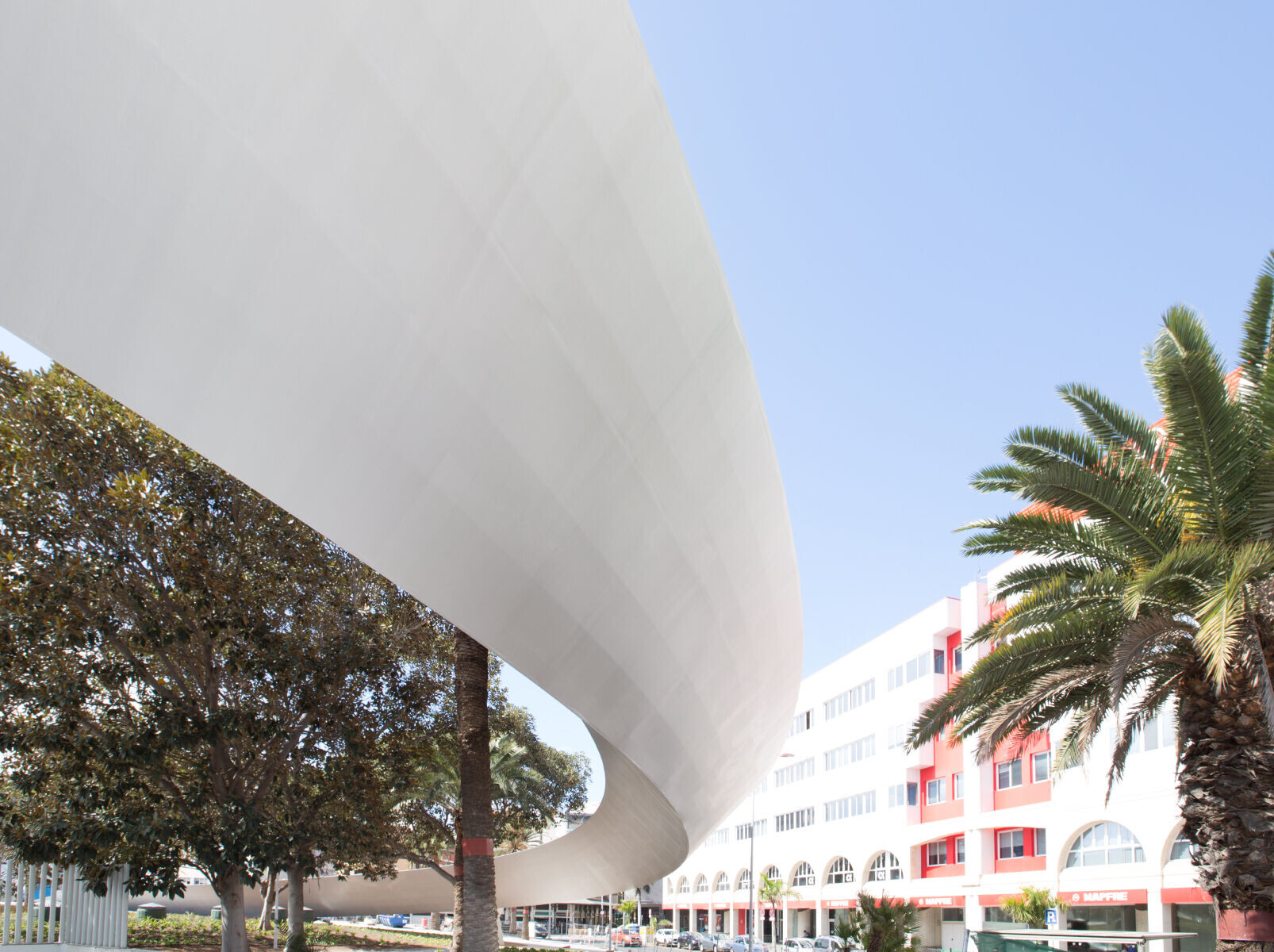
Onda Atlántica footbridge is located at an isthmus whose tides used to cross over not long time ago. Urban development had progressively distanced them away. With the goal to develop its waterfront with recreational and leisure activities, the city of Las Palmas de Gran Canaria established a global urban strategy to again reconnect Las Canteras beach with the Port Area and this bridge is the first step for this new city development. With 3 meters wide and a maximum slope of 6%, the floor level of this footbridge reaches a maximum height of 7.60 meters above street level becoming a new viewing point for the city. It also allows a minimum gauge at the highway of 5.50m, exceeding up to 6 meters at some points.
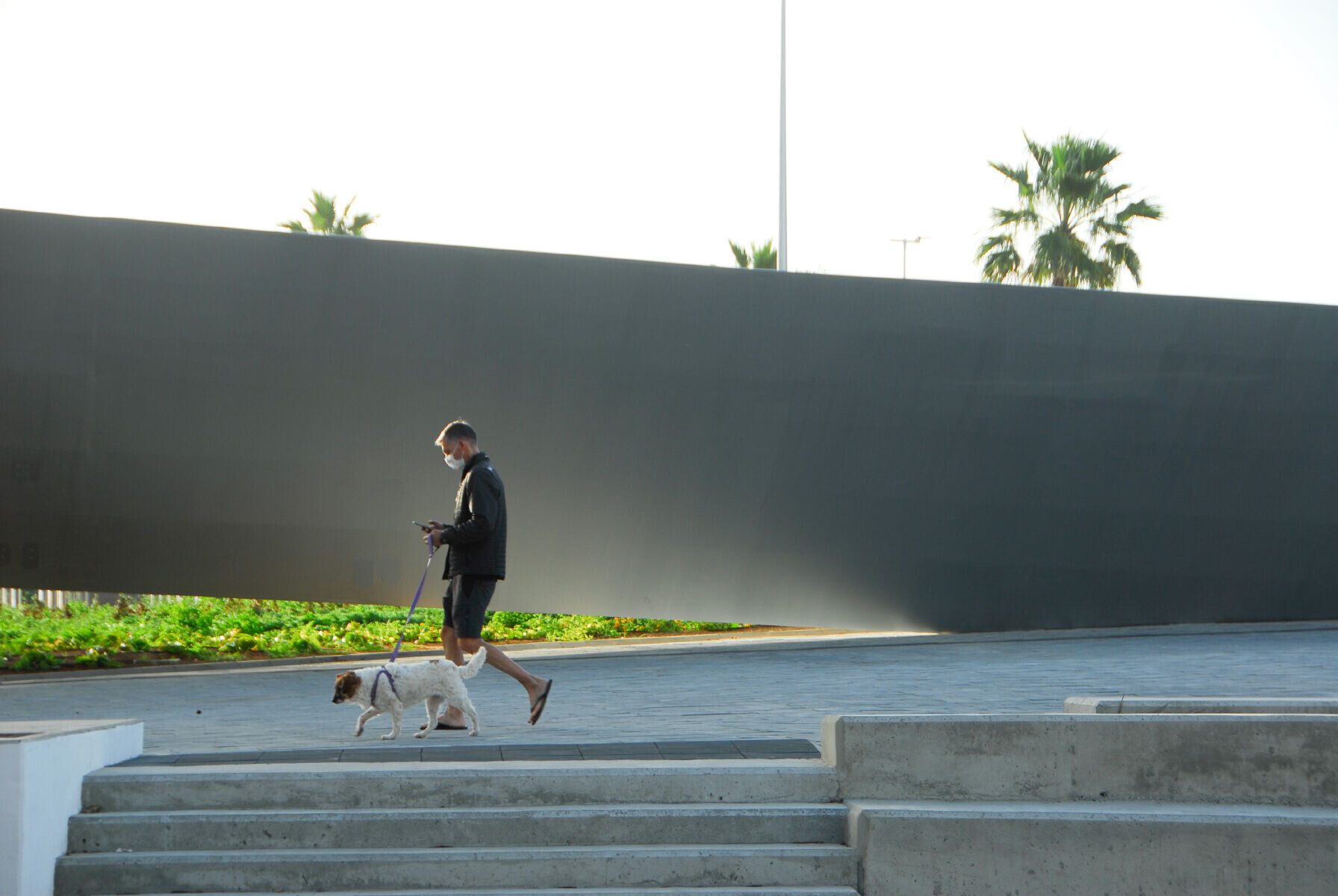
The architects developed a structural scheme inspired from naval engineering designs, adopting a system of ribs or frames arranged every 3.2 meters while tied-up by 10-12mm steel plates. The 18 pieces that made up the final structure, weighting up to 40 tons a piece, where assembled at a metallurgical shop in Seville to be then transported by ship to the site. All the components that conform this footbridge have an structural performance - except for the handrails, resulting into a very efficient and sturdy design. A 3 layer- paint with metallic finish helps, depending on daylight, to fade within the city and ensure protection against the highly corrosive maritime surroundings. Two public spaces have been redesigned to accommodate the footbridge landings. On one side, a fluid plaza receives all the converging pedestrian traffic with green undulating shapes designed to be seen from above turning it into a horizontal vegetal painting. On the other side, a non-walkable landscape design reproduces a volcanic topography reclaiming rocks from the neighboring Isleta mountain.
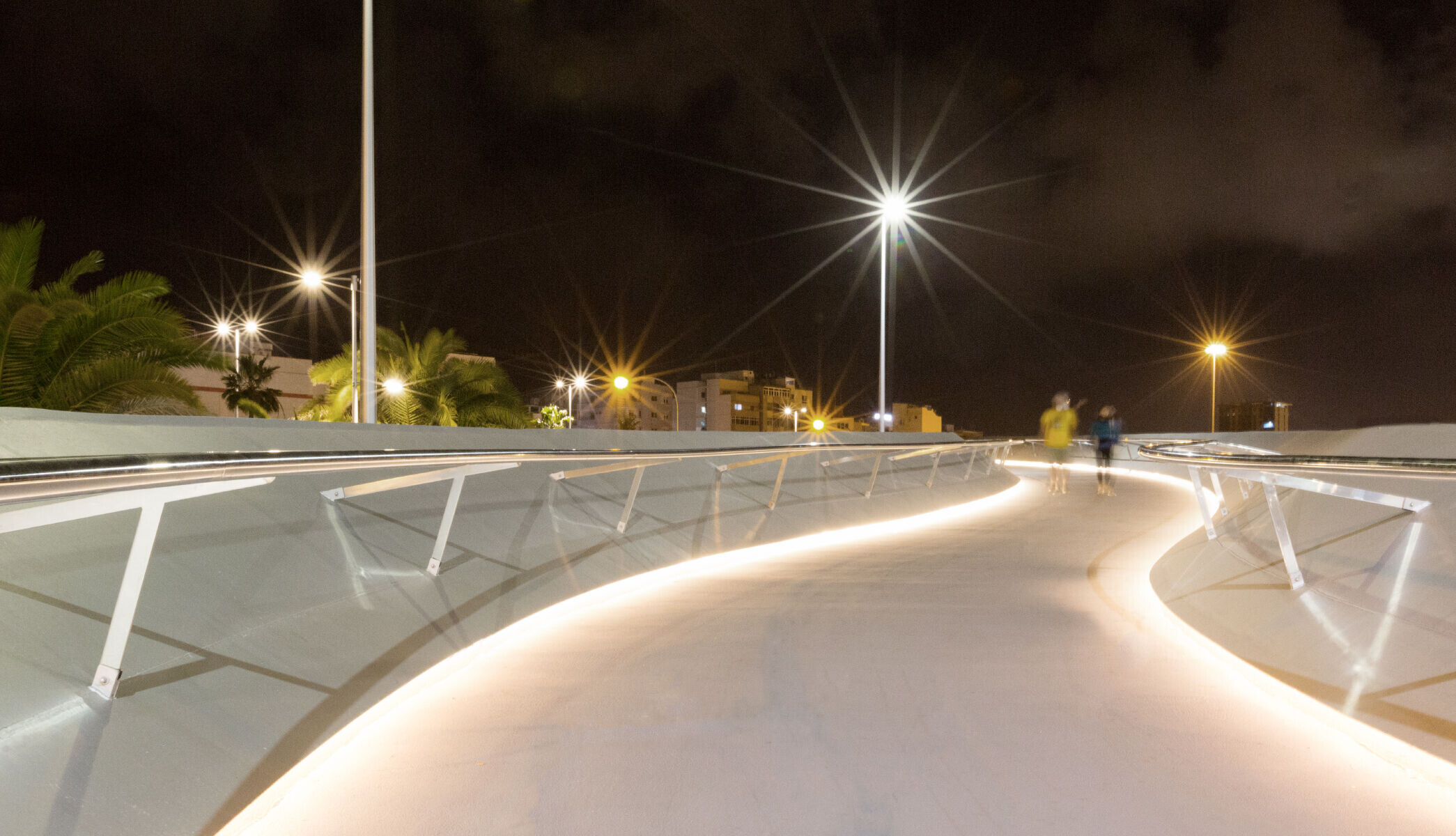
EXTENDED VERSION
URBAN CONTEXT
With the goal to open up to its waterfront and develop it for recreational and leisure usage, the city of Las Palmas de Gran Canaria established the urban strategy of reconnecting Las Canteras beach with the Sanapu dock through a pedestrian bridge.
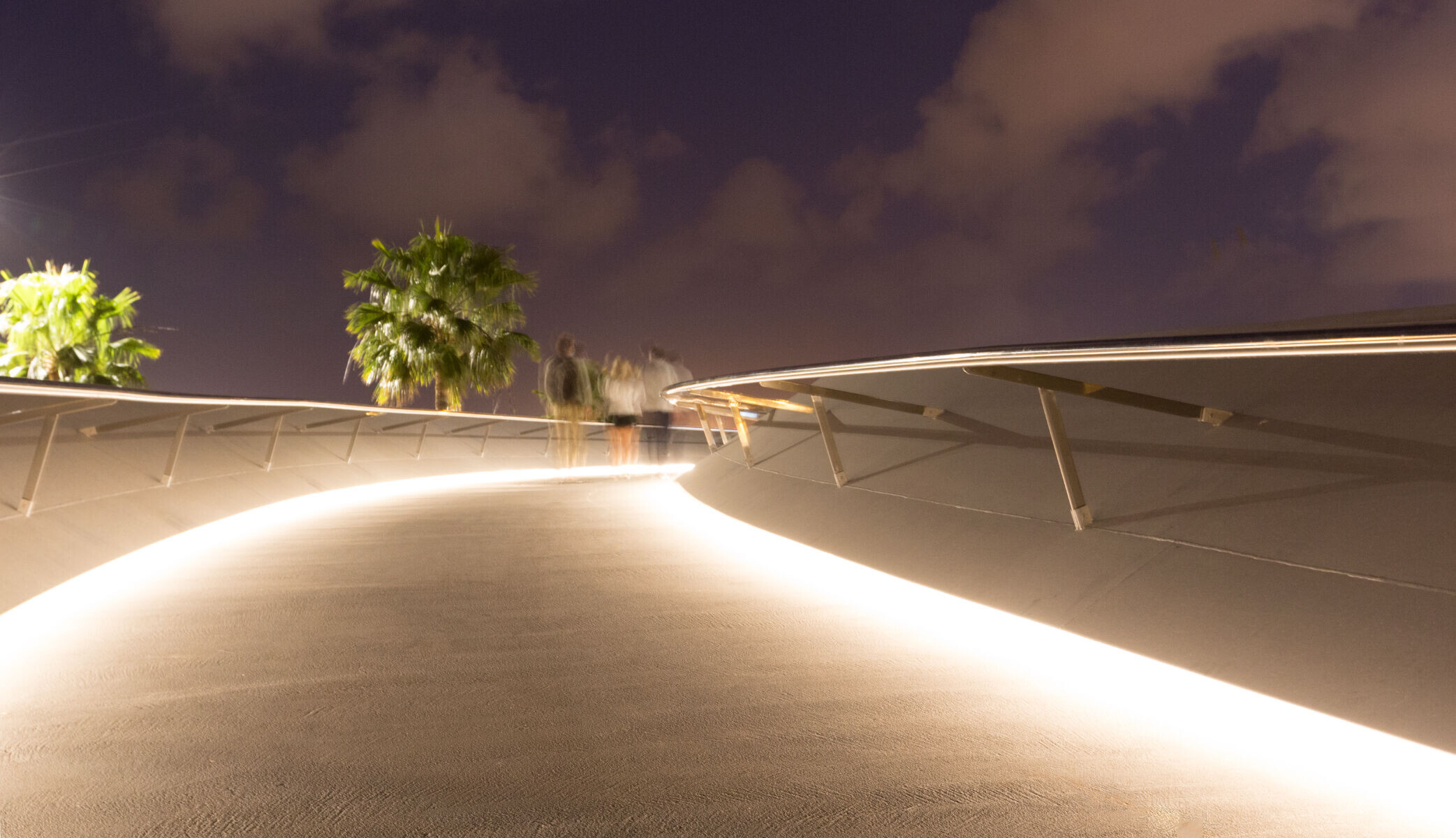
This new footbridge connects the two shores of an isthmus whose both sides where so close that their tides used to cross over from side to side. Over the years, land reclamation from the sea due to the urban development have progressively distanced them away and more recently a high-speed highway have created a physical barrier that put them apart definitively. Now, the city of Las Palmas de Gran Canaria, a modern and cosmopolitan city, has completed this ambitious and comprehensive development plan with a new architectural icon, the Onda Atlántica bridge.
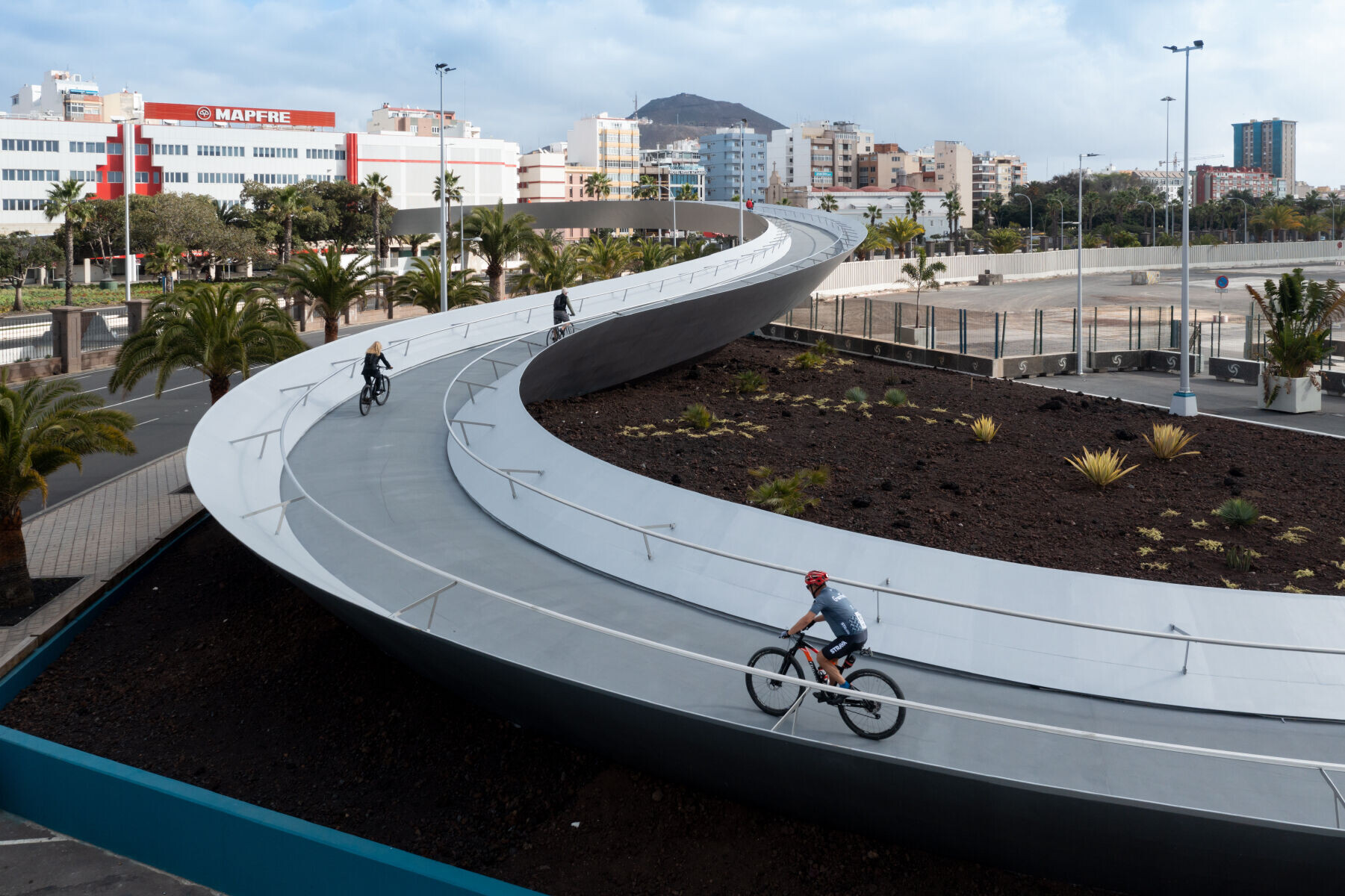
DESIGN
With a total length of 283 meters, the bridge includes three 63 meters spans without intermediate supports. Its undulating shape, resulting from landing space constraints, helped preserving the existing trees and allowed the structure to avoid expansion joints. Its V-shaped profile makes it looks as if it were two-dimensional, just like a curved sheet of paper. Denoting a surprising lightness, the bridge spans over public spaces without any apparent tectonic effort. This profile, which has reminiscences of the hull of a ship, is in fact the result of the need to mitigate the acoustic impact of the highway underneath, it also allows to open up to the views above and for natural light to illuminate the entire path. This resulted in a highly innovative structural system, an extremely efficient triangular shape not common in the world of civil engineering, capable of bridging the required curved distances with a great performative agenda and a minimalistic aesthetic.
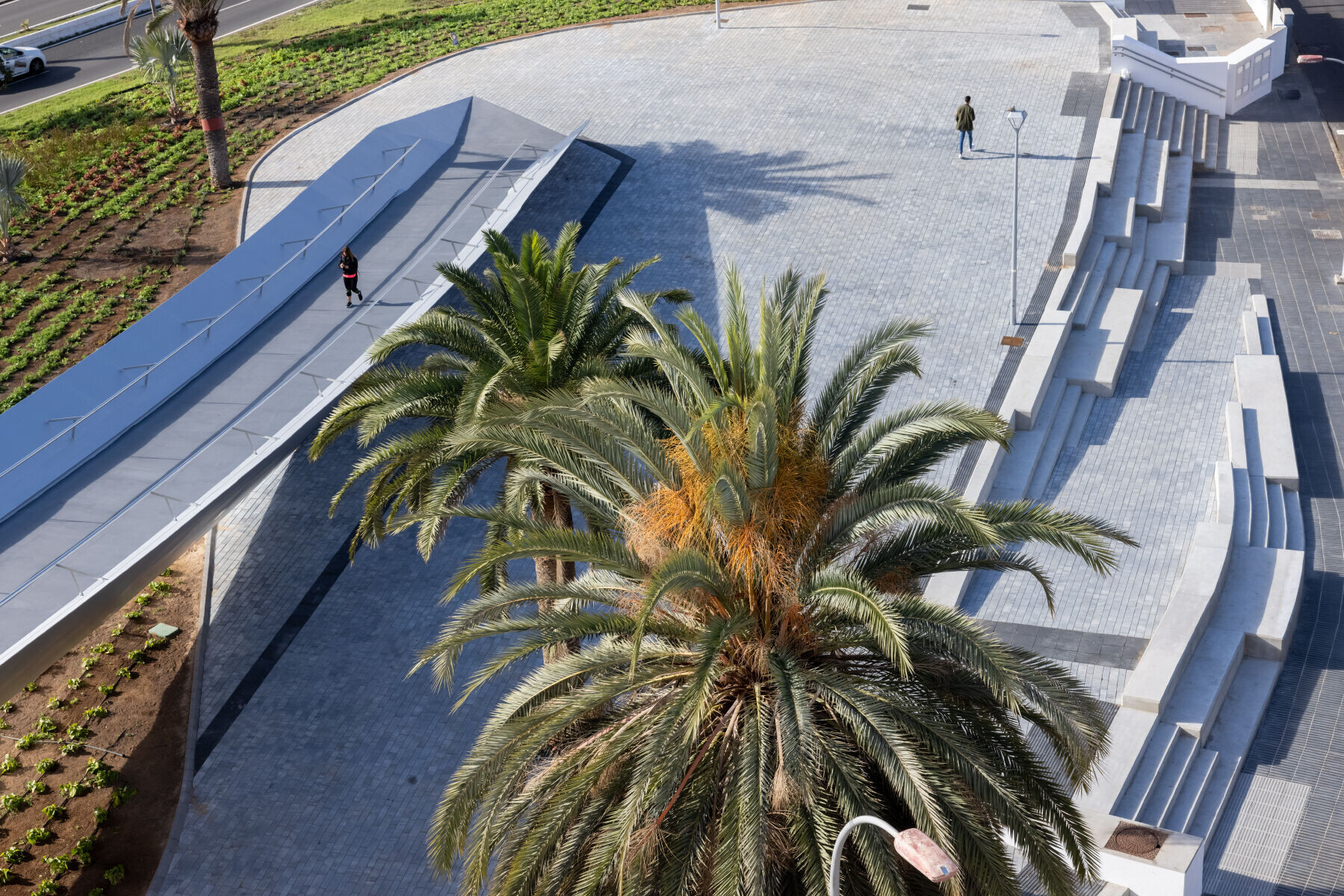
It was designed as a unique gesture, capable of solving all the programatic needs including pedestrian, cyclists and accesible traffic with a single infrastructure, thus avoiding differentiated elements such as stairs and auxiliary elevators. Crossing the bridge becomes a new experience for its visitors as it acts as a traveling movie camera revealing different angles of the city due to its variable path, and its constant section becoming the still frame that shows a moving city behind. The bridge becomes a large urban sculpture that could perfectly fit within the land-art movement as it uses the landscape to portrait it full reading appearing to penetrate both plazas at the landings, even continuing underneath them. Two side wings fold up as metallic origami planes, suggesting arms that invites you to enter between them.
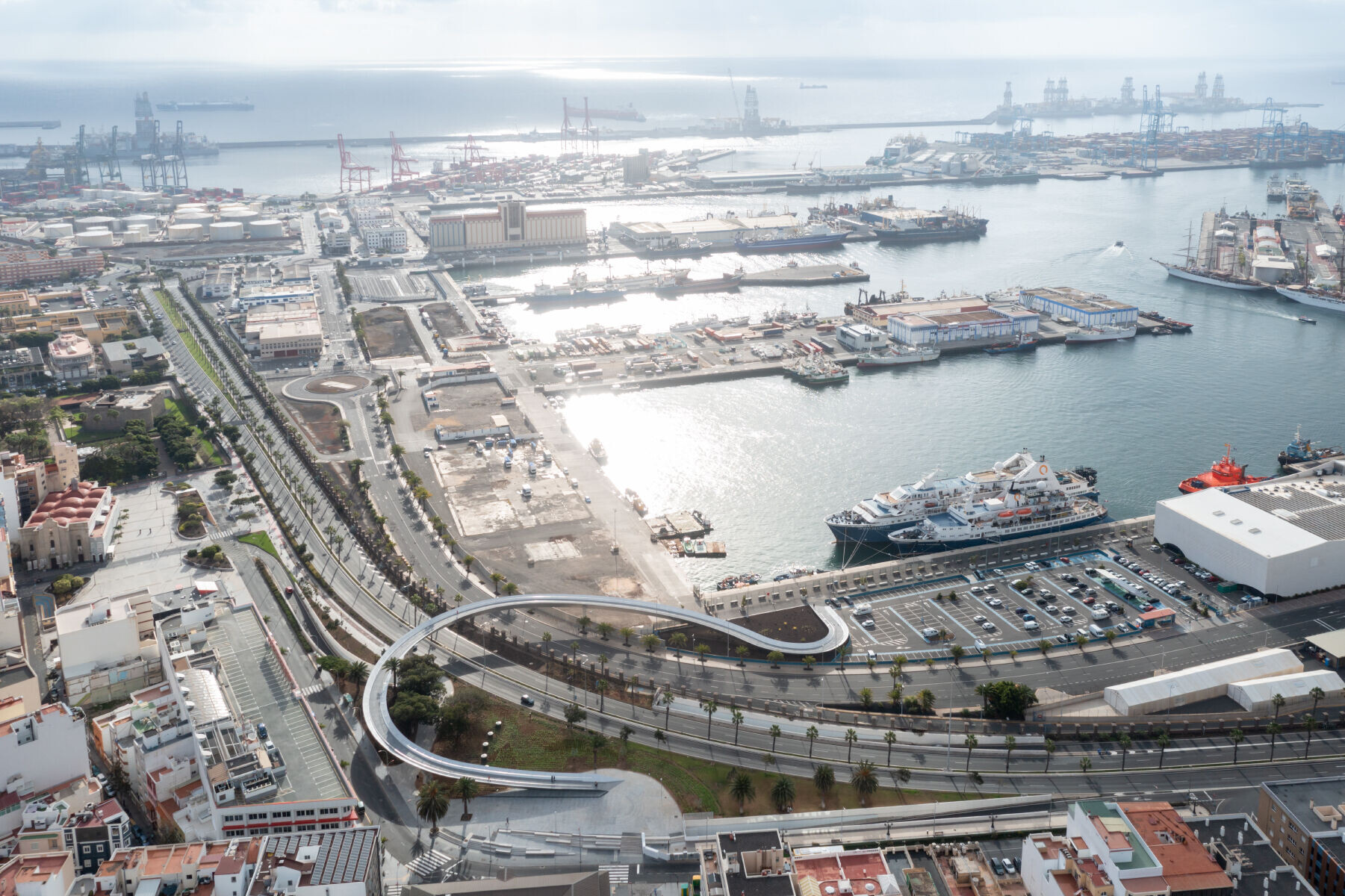
PLAZAS
Two public spaces have been redesigned to accommodate the footbridge landings. On one side, a fluid plaza receives all the converging pedestrian traffic with green undulating shapes designed to be seen from above turning it into a horizontal vegetal painting. On the other side, a non-walkable landscape design reproduces a volcanic topography reclaiming rocks from the neighboring Isleta mountain.
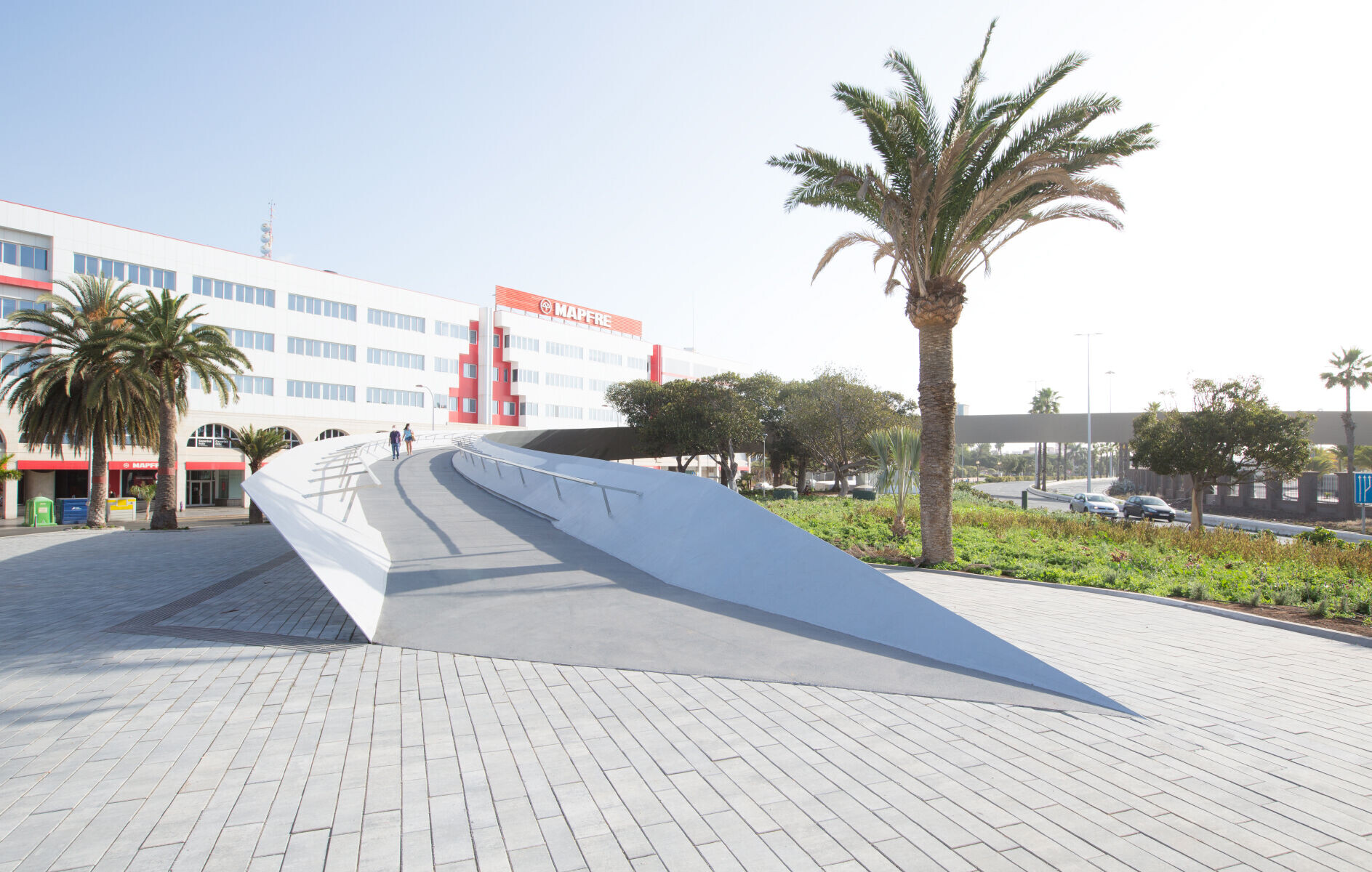
TECHNICAL DETAILS
3 meters wide and a maximum slope of 6%, the floor level of this footbridge reaches a maximum height of 7.60 meters above street level becoming a new viewing point for the city. It also allows a minimum gauge at the highway of 5.50m, exceeding up to 6 meters at some points. The architects developed a structural scheme inspired from naval engineering designs, adopting a system of ribs or frames arranged every 3.2 meters while tied-up by 10-12mm steel plates. The 18 pieces that made up the final structure, weighting up to 40 tons a piece, where assembled at a metallurgical shop in Seville to be then transported by ship to the site. All the components that conform this footbridge have an structural performance - except for the handrails, resulting into a very efficient and sturdy design. A 3 layer-paint with metallic finish helps, depending on daylight, to fade within the city and ensure protection against the highly corrosive maritime surroundings.
